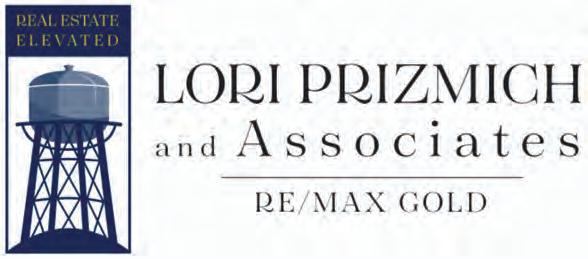






































































































LINDA BELL BANKRATE.COM
The Federal Reserve just did something it hadn’t yet done in 2025: It lowered its benchmark overnight lending rate.
While the markets largely expected September’s quarterpoint rate cut, it does mark the beginning of a potential easing cycle after months of holding rates steady. That matters for homeowners because the Fed’s decisions ripple through to home equity loan and HELOC rates, shaping how expensive (or affordable) it is to tap into the value of your home.
The natural questions now are: How much rate relief can home equity borrowers actually expect? And how might that impact the appetite for borrowing?
If you’ve got a HELOC, you know that the Fed’s moves matter. HELOCs have variable rates tied directly to the prime rate, which typically moves almost in lockstep with the Fed’s benchmark rate. In contrast, fixed-rate home equity loan rates are less sensitive to Fed moves, although new borrowers may see their rates gradually shift as well.
September’s recent cut is already showing up in the numbers. In the week of September 24, both HELOCs and home equity loans recorded some of their most significant drops of the year, falling to 7.88% and 8.19%, respectively, according to Bankrate’s national survey of lenders. On the heels of last year’s tightening, rates are poised to continue falling, with the

the Fed cuts at the end of the year could put a damper on those deals.
“Marketing spend is typically front-loaded for the spring lending season, and right at that time, we saw probably the biggest number on record of the usage of promotional rates,” says Ken Flaherty, senior manager, retail lending at Curinos, a data insights firm based in New York. “In Q4, [lenders] are typically out of spend or don’t have it aligned to the non-seasonal months of home lending, which is typically Q4 and Q1 of every year.”
Fed signaling more rate reductions to come.
“Incorporating the full point of cuts the Fed made last year, plus the recent quarter-point cut and the half-point of additional [quarter point] cuts forecast by the end of the year [at the October and December meetings], that’s 175 basis points in total cuts from September 2024 through December 2025, most likely,” says Ted Rossman, senior industry analyst at Bankrate.
That means by year’s end, average HELOC rates could land around 7.3%. Fixed-rate home equity loans may ease more slowly and settle around 7.9%.
Not cheap money, but a notable improvement from the 10+ percent highs borrowers faced at the beginning of 2024.
Although rates may trend lower this year, the reality is that it will take some time for a drop in home equity rates to reach borrowers’ wallets.
“While there is certainly cause to rejoice with the Fed cutting rates, it will take many rate cuts of 0.25% for consumers to start really noticing and feeling the improvement in their monthly payments,” says Sarah DeFlorio, vice president of mortgage banking at William Raveis Mortgage, a real estate company based in Connecticut.
In other words, it’s a series of interest rate cuts, and not just a single one, that will make the most difference. “If HELOC rates fall to the low 6% range by late
2026, it will lower the monthly payment needed to withdraw $50,000 in equity by another $50, about 17% less than today’s levels,” notes Selma Hepp, chief economist at Cotality.
While that’s meaningful, perspective also matters. “We’re not going back to 3% to 4% HELOCs anytime soon, but this is becoming a less expensive source of funds, which could open up some more usage for home improvements, debt consolidation, etc.,” says Rossman.
In falling interest rate environments, lenders often roll out promotional HELOC rate offers to capitalize on rising consumer demand. However, the timing of
However, due to the potential for additional rate cuts this year, teaser offers can often be a double-edged sword for lenders. While the offers drum up business, the danger is that if lenders choose a promotional rate now, two more rate cuts from now, the standard rate could be even lower than the teaser rate, explains Kinley Hicks, home equity market analyst at Curinos. “It’s finding a balance, because typically these [promo rates] are locked for six to 12 months.”
Even without aggressive promotions, there are two primary reasons more homeowners could tap into their housing stake. Although equity growth has moderated, homeowner equity totaled $17.5 trillion in the second quarter of 2025, or about $307,000 per homeowner, according to Cotality data. That’s the third-highest figure ever. Flaherty notes that following the Fed’s surprise 50-basis-point cut in September of 2024, both home equity utilization and average
Q: My mother passed away recently. She had been a widow for almost 20 years and pretty much the only thing she owned of value is the home I was raised in. I don’t want to keep the house and tried to list it for sale but my Realtor checked title and said I have to get it put into my name first before I can sell it. What should I do?
A: There’s a lot of you haven’t told me.
For example, did your mom have a trust or will or neither? Do you have brothers or sisters? How is title to the property cur rently held? All of these facts need to be ascertained before you can decide what to do next.
For example, if your mom had a trust, sometimes called a living trust, and the house had been put into the trust, you may not need any court action.

However, if mom had a will (or no estate plan of any kind), you will have to open a probate in the local court.
On the other hand, if the property was held in joint tenancy with you or someone else, legal title to the entire property immediately passed to the surviving tenant the moment your mom passed away.
Here’s how it works.
Let’s say your mom had a trust. Hopefully she changed title to the house and put it into the trust. You would know she did so because title would read, “Mom, as trustee of Mom’s Living Trust,” or something similar.
If so, are you designated as the trustee?
If the trust document appoints you as the trustee you can record some documents which will allow you, as trustee, to deed the property to someone else.
Are you the only heir?
If, for example, you and your named as trustee, you would sell the house and split the proceeds
If there was no trust, or there was a trust but your mom hadn’t transferred the property into it,
If there is a will, it may nomalthough nowadays we call them,

Just like with the trust, you as the personal representative would have the obligation to sell the property and divide the proceeds according to the will’s instructions.
The difference is you would have to open a probate, go through certain statutory notice procedures, and get court approval for the sale.
Probates are technical and complicated, especially when dealing with real estate, so you would need an attorney.
Finally, if your mom died intestate, a fancy word for someone who dies without a will, the state of California has a will for her. It leaves everything equally to all her kids.
Again, someone would have to go to court, open a probate and ask to be appointed as the personal representative. At that point things proceed exactly as if there had been a will.































TOTAL SALES: 4
LOWEST AMOUNT: $640,000
HIGHEST AMOUNT: $1,365,000
MEDIAN AMOUNT: $930,000
AVERAGE AMOUNT: $966,250
505 Arguello Drive - $1,365,000
08-18-25 [4 Bdrms - 2758 SqFt - 2005 YrBlt], Previous Sale: 06-10-10, $515,000
325 East K Street - $945,000
08-22-25 [3 Bdrms - 1444 SqFt - 1904 YrBlt], Previous Sale: 12-10-21, $740,000
43 Linda Vista Street - $640,000
08-21-25 [2 Bdrms - 832 SqFt - 1943 YrBlt], Previous Sale: 05-11-23, $595,000
129 Mountview Terrace - $915,000
08-22-25 [3 Bdrms - 2656 SqFt - 1984 YrBlt], Previous Sale: 06-25-19, $732,000
TOTAL SALES: 6
LOWEST AMOUNT: $275,000
HIGHEST AMOUNT: $880,000
MEDIAN AMOUNT: $520,750
AVERAGE AMOUNT: $532,750
725 Fielding Way - $880,000
08-22-25 [5 Bdrms - 2201 SqFt - 2023 YrBlt], Previous Sale: 03-31-23, $830,000
1735 Marenda Drive - $539,000
08-22-25 [3 Bdrms - 1328 SqFt - 1992
YrBlt], Previous Sale: 05-07-21, $500,000
840 Newgate Way - $450,000
08-22-25 [3 Bdrms - 1392 SqFt - 1961 YrBlt]
145 Pegord Avenue - $275,000
08-20-25 [2 Bdrms - 1320 SqFt - 1969
YrBlt], Previous Sale: 11-02-99, $137,500
815 Sunset Drive - $502,500
08-20-25 [2 Bdrms - 1638 SqFt - 1968 YrBlt]
1025 Woodvale Drive - $550,000
08-20-25 [4 Bdrms - 1439 SqFt - 1975
YrBlt], Previous Sale: 02-25-15, $320,000
TOTAL SALES: 15
LOWEST AMOUNT: $200,000
HIGHEST AMOUNT: $855,000
MEDIAN AMOUNT: $555,000
AVERAGE AMOUNT: $530,200
1105 Coulter Court - $739,000
08-18-25 [4 Bdrms - 2379 SqFt - 1991
YrBlt], Previous Sale: 07-14-15, $435,000
58 El Toro Court - $265,000
08-22-25 [3 Bdrms - 1164 SqFt - 1974
YrBlt], Previous Sale: 02-15-22, $275,000
2804 Elmhurst Circle - $485,000
08-21-25 [4 Bdrms - 1474 SqFt - 1976
YrBlt]
2128 Fieldcrest Avenue - $855,000
08-20-25 [3 Bdrms - 2914 SqFt - 2001
YrBlt], Previous Sale: 07-07-14, $505,000
3650 Fullerton Court - $560,000
08-19-25 [4 Bdrms - 2462 SqFt - 1995 YrBlt], Previous Sale: 06-17-09, $350,000
1743 Kearny Court - $650,000
08-21-25 [4 Bdrms - 2585 SqFt - 1980 YrBlt], Previous Sale: 00/1991, $280,000
1586 Matthew Drive - $510,000
08-18-25 [3 Bdrms - 1196 SqFt - 1985 YrBlt], Previous Sale: 09-16-99, $131,000
1243 Meadowlark Drive - $240,000
08-22-25 [3 Bdrms - 1604 SqFt - 1969 YrBlt], Previous Sale: 12-22-17, $312,000
1424 Michigan Street - $465,000
08-22-25 [3 Bdrms - 1000 SqFt - 1954 YrBlt], Previous Sale: 07-20-10, $116,000
2235 Nottingham Drive - $500,000
08-19-25 [3 Bdrms - 1406 SqFt - 1963
YrBlt], Previous Sale: 08-07-17, $345,000
1218 Pennsylvania Avenue - $200,000
08-21-25 [3 Bdrms - 1098 SqFt - 1951 YrBlt]
5041 Soprano Circle - $705,000
08-19-25 [4 Bdrms - 2408 SqFt - 2017 YrBlt], Previous Sale: 07-17-23, $740,000
2144 Still Court - $555,000
08-18-25 [4 Bdrms - 1618 SqFt - 1976
YrBlt], Previous Sale: 03-23-17, $335,000
2783 Vista Palomar - $649,000
08-18-25 [4 Bdrms - 1800 SqFt - 1977
YrBlt], Previous Sale: 07-11-15, $330,000
2398 White Drive - $575,000
08-19-25 [3 Bdrms - 1845 SqFt - 2004 YrBlt], Previous Sale: 05-01-15, $352,000
TOTAL SALES: 4
LOWEST AMOUNT: $395,000
HIGHEST AMOUNT: $700,000
MEDIAN AMOUNT: $477,500
AVERAGE AMOUNT: $512,500.
280 Foxwood Lane - $395,000
08-20-25 [2 Bdrms - 1172 SqFt - 2005 YrBlt], Previous Sale: 06-13-05, $313,788
2063 Lavender Place - $450,000
08-22-25 [3 Bdrms - 2023 YrBlt], Previous Sale: 02-25-25, $472,500
500 Logan Street - $505,000
08-21-25 [3 Bdrms - 1725 SqFt - 1964
YrBlt], Previous Sale: 07-22-98, $158,500
174 Pine Hills Drive - $700,000
08-19-25 [2 Bdrms - 2742 SqFt - 2014 YrBlt], Previous Sale: 11-16-19, $644,000
TOTAL SALES: 1
LOWEST AMOUNT: $500,000
HIGHEST AMOUNT: $500,000
MEDIAN AMOUNT: $500,000
AVERAGE AMOUNT: $500,000
261 Bridgewater Circle - $500,000
08-22-25 [3 Bdrms - 1556 SqFt - 1989 YrBlt], Previous Sale: 00/1989, $133,000
TOTAL SALES: 20
LOWEST AMOUNT: $330,000
HIGHEST AMOUNT: $950,000
MEDIAN AMOUNT: $637,500
AVERAGE AMOUNT: $622,575
119 Asbury Drive - $545,000
08-21-25 [3 Bdrms - 1274 SqFt - 1974
YrBlt], Previous Sale: 07-22-21, $520,000
149 Auburn Way - $950,000
08-19-25 [2 Bdrms - 3314 SqFt - 1983 YrBlt]
243 Cedar Street - $575,000
08-22-25 [4 Bdrms - 1576 SqFt - 1956
YrBlt], Previous Sale: 05-22-17, $398,500
342 Dublin Way - $650,000
08-18-25 [3 Bdrms - 1464 SqFt - 1987
YrBlt], Previous Sale: 12-10-21, $554,000
901 Goldfinch Circle - $625,000
08-22-25 [3 Bdrms - 1614 SqFt - 2019
YrBlt], Previous Sale: 05-06-19, $493,000
118 Green Tree Drive - $545,000
08-22-25 [4 Bdrms - 1360 SqFt - 1973
YrBlt]
173 Kodiak Drive - $716,000
08-22-25 [3 Bdrms - 2241 SqFt - 2016 YrBlt], Previous Sale: 04-27-22, $725,000
273 Lisburn Way - $760,000
08-18-25 [4 Bdrms - 2689 SqFt - 1994 YrBlt], Previous Sale: 08-27-24, $750,000
2265 Newcastle Drive - $715,000
08-18-25 [4 Bdrms - 2566 SqFt - 2011
YrBlt], Previous Sale: 04-01-22, $745,000
2240 Newcastle Drive - $665,000
08-20-25 [3 Bdrms - 1625 SqFt - 2011 YrBlt], Previous Sale: 10-26-21, $625,000
706 Oakmeade Drive - $345,000
08-20-25 [4 Bdrms - 1755 SqFt - 1982
YrBlt], Previous Sale: 05-06-19, $479,000
567 Parkridge Drive - $462,500
08-18-25 [3 Bdrms - 1554 SqFt - 1974
YrBlt], Previous Sale: 04-20-99, $168,900
5202 Poplar Road - $875,000
08-21-25 [4 Bdrms - 2611 SqFt - 1974 YrBlt]
242 Rosita Court - $650,000
08-19-25 [4 Bdrms - 2083 SqFt - 1988 YrBlt]
856 Sapphire Circle - $575,000
08-22-25 [3 Bdrms - 1663 SqFt - 1995 YrBlt]
124 Shady Glen Court - $799,000
08-22-25 [4 Bdrms - 2508 SqFt - 1989 YrBlt], Previous Sale: 03-13-23, $495,000
450 Springvalley Drive - $330,000
08-21-25 [3 Bdrms - 1320 SqFt - 1966
YrBlt]
609 Tipperary Drive - $670,000
08-19-25 [4 Bdrms - 1796 SqFt - 1987 YrBlt], Previous Sale: 06-16-10, $241,000
1118 Tulare Drive - $579,000
08-18-25 [4 Bdrms - 1602 SqFt - 1977 YrBlt], Previous Sale: 04-24-19, $389,000 140 Wayne Court - $420,000
08-22-25 [4 Bdrms - 1602 SqFt - 1977 YrBlt], Previous Sale: 10-26-10, $229,000
TOTAL SALES: 15
LOWEST AMOUNT: $290,000
HIGHEST AMOUNT: $805,000
MEDIAN AMOUNT: $529,000
AVERAGE AMOUNT: $525,733
115 Amelia Street - $490,000
08-19-25 [4 Bdrms - 1080 SqFt - 1960 YrBlt], Previous Sale: 04-14-25, $360,000
8723 Aquamarine Drive - $799,000
08-20-25 [3 Bdrms - 2050 SqFt - 2019 YrBlt], Previous Sale: 07-03-19, $633,500
111 Castile Street - $529,000
08-18-25 [4 Bdrms - 1608 SqFt - 1966 YrBlt], Previous Sale: 00/1991, $189,000
1314 Eastwood Street - $534,000
08-21-25 [3 Bdrms - 1778 SqFt - 1973 YrBlt]
270 Ebbetts Pass Road - $639,000
08-21-25 [4 Bdrms - 2061 SqFt - 1956 YrBlt]
713 Falcon Drive - $375,000
08-21-25 [3 Bdrms - 1970 SqFt - 1967 YrBlt], Previous Sale: 01-20-17, $135,000
602 Fleming Avenue - $420,000
08-18-25 [3 Bdrms - 1803 SqFt - 1977 YrBlt], Previous Sale: 06-28-17, $410,000
715 Grant Street - $290,000
08-22-25 [2 Bdrms - 991 SqFt - 1930 YrBlt], Previous Sale: 00/1990, $87,000 910 Keats Drive - $455,000
08-22-25 [3 Bdrms - 1120 SqFt - 1956 YrBlt]
440 Klein Avenue - $710,000
08-19-25 [4 Bdrms - 2496 SqFt - 2005
YrBlt], Previous Sale: 10-04-16, $525,000
456 Maple Avenue - $340,000
08-22-25 [1 Bdrms - 814 SqFt - 1952 YrBlt]
220 Pembroke Drive - $300,000
08-19-25 [3 Bdrms - 1088 SqFt - 1978 YrBlt]
908 South Regatta Drive - $805,000
08-18-25 [4 Bdrms - 2345 SqFt - 1989 YrBlt], Previous Sale: 02-15-19, $600,000
137 Saint Marys Place - $570,000
08-18-25 [3 Bdrms - 1320 SqFt - 1978 YrBlt], Previous Sale: 04-08-15, $230,000
120 Seawind Drive - $630,000 08-22-25 [3 Bdrms - 1808 SqFt - 1980 YrBlt], Previous Sale: 04-10-25, $410,000
From Page 3
I would like to give you a couple of “heads up” types of warnings. Do not list the house for sale until you have figured out your next few steps and, if necessary, received the court’s permission to sell the property. On a number of occasions every year we see clients who have listed their parents’ home, entered into a purchase contract, and then discovered they can’t sell the house without a probate. Finding yourself in that situation can subject you personally to a lawsuit.
Also, if you are going to sell the property, do so during the estate administration or probate because it offers you personally a lot of protection from a buyer’s lawsuit for disclosure issues.
In California, there are lengthy, complicated disclosure laws which subject every seller of residential property to possible liability for undisclosed defects.
So before you sign any listing agreements, figure out your next steps. I’d strongly recommend that you talk to a probate and estate (not a real estate) attorney to at least give you some guidance after reviewing your personal situation.
Tim Jones, Esq., is a real estate attorney in Fairfield. If you have any real estate questions you would like to have answered in this column, you can send an email to AllThingsRealEstate@ TJones-Law.com.

ABOVE: Here, Sweet Caroline has been growing for just over 90 days and shows its full window box potential.
RIGHT: Sweet Caroline Medusa Black will make its debut in 2026 and has already captured First Place at the Color Trials, JC Raulston Arboretum.
FAR RIGHT: Sweet Caroline Medusa Green ornamental sweet potato has captured 29 awards for its unique foliage, beauty, and compact habit.
PHOTOS

Four years ago, an ornamen tal sweet potato shook up the green industry. It was named after Medusa, a figure from Greek mythology. If you remember from junior high, this lady had snakes for hair.
My take on this is that when ever the green industry names a new plant after Medusa, it turns out to be special. Now four years and 29 awards later, Sweet Car oline Medusa Green is one of the finest in the market. Its tight habit makes it the perfect choice for baskets, boxes and contain ers of all sorts and it drapes over a wall with perfection.

That Medusa name is in reference to the leaves that are long, finger-like lobes. The name Medusa Green also gave me hope of another color and indeed it has happened. Sweet Caroline Medusa Black is making its debut in 2026 and like Medusa Green it has already become an award-winner. One thing The Garden Guy really likes is the showy contrast of green leaves against the mature black foliage.
Medusa Black will reach 5 to 12 inches in height with a spread of 30 inches, which is like Medusa Green. The Medusa

Green and Black are like no other ornamental sweet potatoes in the market. Fertile well-drained soil with plenty of sun will have you doing the happy dance. They will do well in part sun, but that glorious compact habit we treasure is
These are the ones you want for hanging baskets, mixed containers, window boxes and draping walls. Recommended spacing is 12 to 18 inches, but along my rock wall I am usually going 8 feet to allow for combinations.
Along the wall I have used Sweet Caroline Medusa Green with Diamond Snow euphorbia, Supertunias and Rockin Salvias behind. I have also added Heart to Heart caladiums. It seems that every color partners with green.
James and the Eden Estate Management team used two
Sweet Caroline Medusa Black sweet potatoes on the ends of the window box belonging to Kim and Joey Mixon in Phenix City, Alabama. A window box can give you the opportunity to have partners in the box and then in a bed in front, if you have one. They used Red Sisters Hawaiian Ti and Heart to Heart caladiums in front, and Supertunia Mini Vista petunias and Angelface White summer snapdragons as partners in the box. The Hawaiian Ti is magical and much underused. In zones 8 and 9 it usually returns from winter.
Sweet Caroline Medusa, both Black and Green, will steal your heart and give you a new outlook and enjoyment on growing ornamental sweet potatoes. Here is hoping you will try them in 2026.
Norman Winter is a horticulturist, garden speaker and author of “Tough-as-Nails Flowers for the South” and “Captivating Combinations: Color and Style in the Garden.” Follow him on Facebook @NormanWinterTheGardenGuy. He receives complimentary plants to review from the companies he covers.



DAVID MCMILLIN BANKRATE.COM
The majority of real estate deals are known as “arm’s-length transac tions,” a term that reflects the distance between a buyer and seller who do not have any kind of existing relationship. However, there are scenarios where the two parties know each other – well. Selling to (or buying from) someone you know, especially a family member, is often called a non-arm’s-length transaction. If you’re thinking about selling your house to a child, sibling, cousin or any other relative, there are some important things to consider first.
Do you need an agent for a non-arm’s-length sale?
If you have a relative who wants to buy your house, you may assume that means you can avoid real estate agents and the associ ated commission fees – just under 5.5 percent of the purchase price when split between the listing and the buyer’s agents, according to Clever Real Estate. In fact, the most recent breakdown of home sales from the National Association of Realtors shows that 38 percent of for sale by owner deals involve parties who know each other, and after all, you’re family. It’s a win-win, right?

tions. That means you may need to file a form and consider how the property factors into your overall lifetime gift limit (more on that below).
Should you order a home inspection before selling to a family member?
In addition to determining how much the property is worth, it’s wise to identify any hidden issues that might impact that value – and that might create some friction between you and the new owner down the road.
A professional home inspector can also play a part in avoiding repair-related arguments at the Thanksgiving table. Make sure anything found in the inspection is addressed by a pro, and not just a DIY fix. That way, if there’s an issue with it at some point in the future, “it’s not on you,” says Jensen. “Ten years down the road, you’re still going to be siblings. You don’t want to have botched repairs create a lingering issue.”
Not so fast. James Jensen, associate broker and owner at RE/MAX Now in Valley City, North Dakota, points out that the closer your relationship is, the more useful a real estate agent with no connection to the property can be. “The most important piece of these transactions is having a neutral third party who can keep emotions in check and focus on the facts,” he says. Joseph Becker, managing
principal broker at RE/MAX Out West Realty in Prineville, Oregon, agrees that an agent can play a key role in alleviating potential awkwardness in family deals.
He points to former clients as an example: a divorcing couple who were selling the family home to their son, with plans for the father to continue living there after the sale.
“My Realtor role was in making sure the paperwork was done correctly,” Becker says. “It was an interesting transac-
tion. The couple had agreed on a price, the son had agreed to purchase, and my job was to make sure all legal requirements were met. With all the family dynamics, there were times I felt like a mediator of sorts, making sure everyone was treated fairly in the process.”
While a real estate agent is
optional – which also applies even if you’re selling a house to someone you don’t know – hiring a professional appraiser is critical. An appraiser will assess the fair market value of the home, which is important for the new owner to understand when determining how much to pay for insurance.
It’s also an important piece of information that factors into taxes: If you’re selling your home to a child, for example, for significantly less than its appraised value, it will have gift tax implica-
Real estate attorneys can be essential when dealing with familial transactions. “The attorney can take the personal burden off the client, setting the rules and helping avoid potential trouble,” Jensen says.
Selling to a relative might sound like a potentially speedy process: It’s all in the family, so shouldn’t you be able to skip
See Family, Page 13















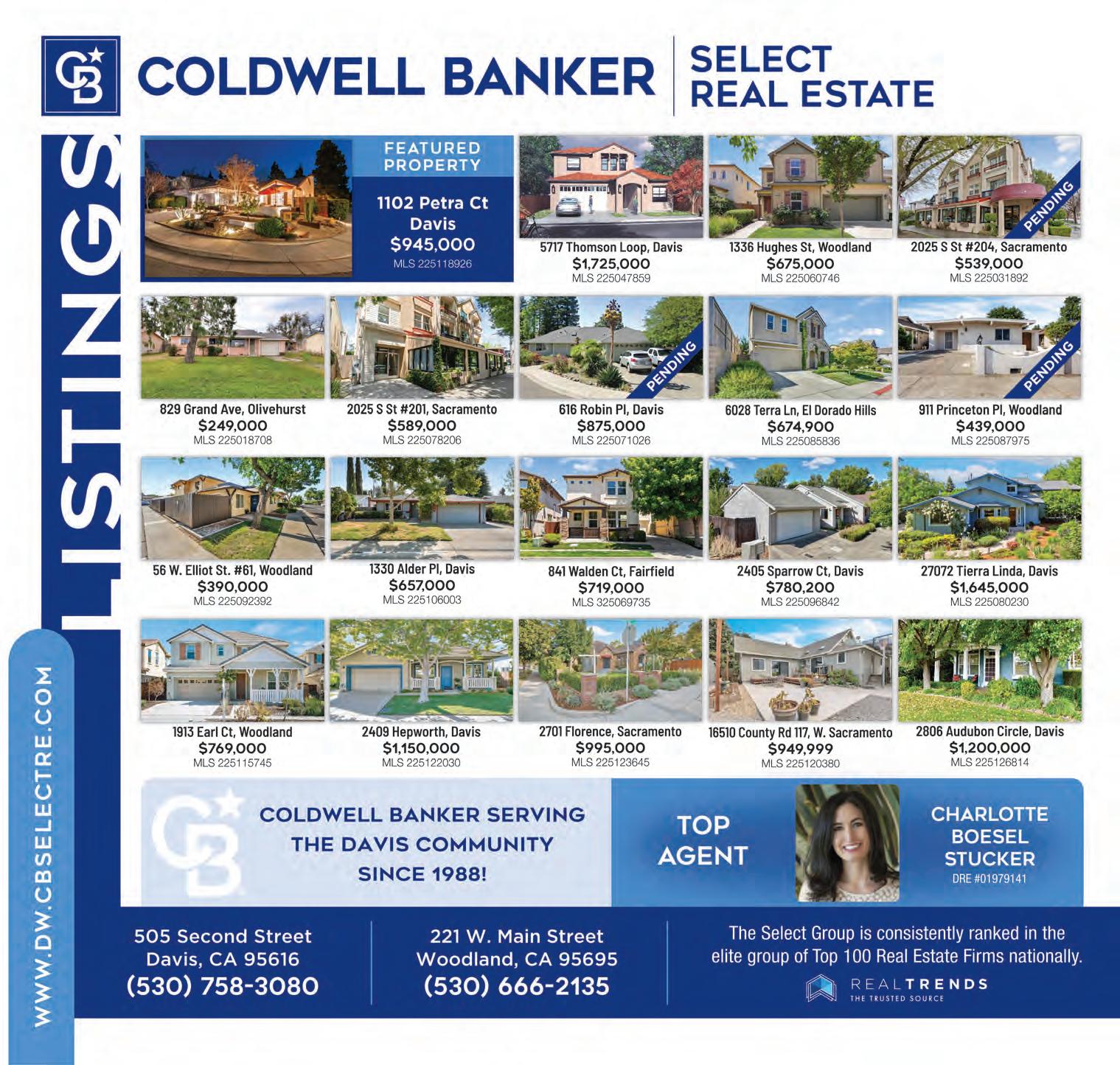


Believe it or not, this is a great time to look into hiring a holiday lighting professional. Their schedules fill up fast as the cold months approach. An Angi survey found that nearly two-thirds of homeowners plan to decorate for the holidays, with front yards, indoor trees and windows topping the list of display spots. For many, those glowing strands are the essence of seasonal cheer, but the road to that warm glow is often paved with frustration. Last year, 81% of people who decorated their own homes told us they ran into trouble. Add in icy ladders and finicky electrical connections, and it’s easy to see why 42% are considering hiring help this year.
Hiring a professional holiday decorator can run anywhere from $300 for simple work to more than $2,500 for a full-house transformation. The trick to spending wisely is knowing what drives those numbers.
The biggest cost factor is the size and ambition of your decorating plan. A small project, like trimming a single tree or adding wreaths, may be priced as a flat fee. Large, complex displays often switch to hourly or per-square-foot pricing. If you want every room decked out, plus exterior lighting, expect the labor hours and material costs to multiply quickly.
For most homeowners, holiday lighting is the single largest line item. Costs vary with your home’s size, the complexity of installation and the types of bulbs used. Larger homes require more linear footage of lights and may involve difficult ladder work or roofline access
that increases labor rates.
Bulb choice matters, too. LEDs cost more upfront than incandescent strands, but they cut long-term electricity costs. Smart or color-changing lights can push material expenses even higher.
Labor costs rise in proportion to difficulty, so placement matters in your budget. A simple balcony wrap may be inexpensive, but high rooflines, tall outdoor trees, and intricate ground displays add hours. Pros may charge per linear foot or per element installed. If your vision includes lighting every tree in the yard, plan for significant time and ladder work.
A typical decorating bill is about 65% materials and 35% labor. That means your first year with a decorator will likely be the most expensive, since you’ll be buying the lights, wreaths, garlands and other pieces for the first time. In following years, reusing your materials can reduce the bill substantially.
Different pros bring different pricing. Landscapers who offer holiday packages may charge $50 to $100 per hour, while interior designers who design custom looks often run $50 to $200 per hour. Highly specialized holiday decorators can reach the top end of the range, especially if they’re providing both design and installation.
When hiring, verify licensing, bonding and insurance. These are always crucial steps, but they take on extra importance on jobs that involve ladders and going on the roof.
Be sure to plan for additional expenses that might arise. Electricity use can spike in December, particularly with incandescent or all-night displays. LEDs or timer-controlled lights can keep utility bills man-

Hiring a professional holiday decorator can run anywhere from $300 for simple work to more than $2,500 for a full-house transformation. The trick to spending wisely is knowing what drives those numbers.
ageable. You might also need an electrician to add outlets or handle wiring for larger displays. When the season ends, you’ll either pay extra for takedown or bundle it into your original contract. This can range from $100 to $200 for light and decor removal. Handling takedown yourself is one of the easiest ways to trim your budget.
The magic of the holidays comes from the atmosphere you create. With a clear plan, you can have a showstopping home without overspending. By understanding the cost factors and making strategic choices, you’ll get maximum sparkle for your holiday budget.
Tweet your home care questions with #AskingAngi and we’ll try to answer them in a future column.
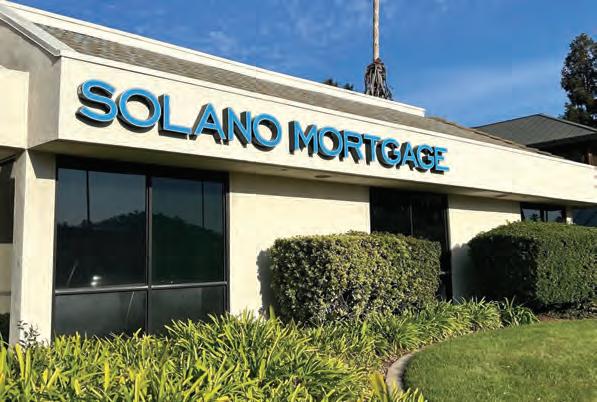


VA looks at income qualifying two different ways. The traditional debt ratio guideline for VA is 41%, however a VA loan can be approved with a debt ratio well over 50% if the veteran has a substantial amount of net residual income left over after his or her obligations are paid each month. A veteran with no dependents, high FICO scores, very high net income after taxes and some cash reserves can go well over 50%. We funded one a couple years ago at something like 65%.

FHA underwriters want to see a 31% housing ratio and a 43% overall debt ratio, however, in Solano and Yolo counties, we rarely see an FHA homebuyer anywhere near these ratios.
The Fannie and Freddie automated underwriting system will often approve an FHA buyer with a housing ratio of 44% and an overall ratio as high as 54% if the buyers have FICOs well above 640, with stable income and no major derogatory credit, such as bankruptcy, repos, big collections and judgments.
For conforming Fannie and Freddie conventional loans, 49.99% on the overall ratio has been the max for a while now, and getting approved with a ratio near 50% requires the loan file to be very solid from credit to income. Before automated underwriting and artificial intelligence took over 25 years ago, the debt ratio guidelines were strictly enforced and the only way to get a loan approved anywhere near 50%, the borrower would have to have large amounts of cash reserves and other compensating factors. Loan officers gave boxes of See’s candy, pizzas and flowers to generous underwriters until computers took over the decision-making process.
Humans still make most of the credit decisions on jumbo loans and the ratios are usually 43%, but automated underwriting is getting bigger and bigger in jumbo.
Jim Porter, NMLS No. 276412, is the branch manager and senior loan adviser of Solano Mortgage, NMLS No. 1515497, a division of American Pacific Mortgage Corporation, NMLS No. 1850, licensed in California by the Department of Financial Protection and Innovation under the CRMLA / Equal Housing Opportunity. Jim can be reached at 707-449-4777.
An adjustable-rate mortgage (ARM) is often discussed as an option to help lower initial costs and increase flexibility, particularly in a high-cost housing market. However, it’s important to understand how these loans work, their potential risks, and strategies for managing adjustments over time.
An ARM is a loan with an interest rate that will change throughout the life of the mortgage. In contrast, a fixed-rate mortgage has a fixed interest rate that is set when you take out the loan and does not change. In contrast to the stability of fixed-rate mortgages, with an ARM, your monthly payments may go up or down over time.
ARMs have two distinct periods: The initial period: This period lasts between three to 10 years after you receive your loan, during which time the interest rate on your loan doesn’t change. It’s also known as the fixedrate period. The most common ARM terms have initial periods of three, five or 10 years.
The adjustment period: Once the initial period ends, your loan will adjust. All ARMs have adjustment periods that determine when and how often the interest rate on your loan can change. Your adjusted rate will be based on your individual loan terms and the current market.
The name of your ARM will indicate the duration of the initial period and how often in a year your rate can adjust. For example, the most common adjustable-rate mortgage is a 5/6 ARM. This means you will have a fixed-rate period of five years. After that, you can expect your ARM to adjust once every six months.
ARMs also typically offer a rate cap structure, consisting of these three different caps, which limit how much your rate can increase or decrease:
Initial cap: Limits how much your rate can increase when your rate first adjusts.
Periodic cap: Limits how much your rate can increase from one adjustment period to the next.

Lifetime cap: Limits how much your rate can increase or decrease over the life of your loan.
Let’s say you have a 5/6 ARM with a 2/1/5 cap structure. This means that after your initial period expires, your rate can increase by a maximum of 2 percentage points above the initial interest rate. Every adjustment period thereafter, your rate can adjust a maximum of 1 percentage points. Over the life of the loan, it can never increase more than 5 percentage points above the initial rate.
ARMs typically provide lower mortgage rates during the initial period, which can translate into significant savings. This could be a good choice if you plan on moving or selling within five years – or before the adjustment period of the loan – or if interest rates are high when you buy. You could also select an ARM if you plan to refinance before the initial period ends. Just be sure to account for refinancing costs, which are similar to the costs you pay when closing on your home purchase.
Additionally, some ARMs require you to pay penalties upward of several thousand dollars for refinancing early.
Because your interest rate could adjust higher, ARMs come with a level of uncertainty about future monthly payments. This is important because you are still responsible for making your monthly payments if your rate adjusts upward. Freddie Mac’s Adjustable-Rate Mortgage Calculator can help you determine how much your monthly payments may cost over the life of the loan. With this knowledge handy, you can budget ahead of time for even the highest rate adjustments allowable according to your loan’s terms.
To determine the right mortgage for your situation, lean on your lender or financial professional for guidance and check out the resources and tools available at https://myhome. freddiemac.com.
When it comes to mortgages, you have options, making it important to carefully consider the features and benefits of each type of loan.





































































From Page 2
balances increased.
Additionally, millions of homeowners are “locked in” to 2- to 3-percent mortgages and are reluctant to sell. Tapping into their equity for renovations or debt consolidation is a way to put that wealth to work without giving up a cheap first mortgage.
The stage has already been set. In the second quarter, home equity lending increased more than 16% from the previous quarter and almost 5% from last year, according to ATTOM Data Solutions. What’s more, ICE reported that homeowners pulled $52 billion in equity from their properties in the second quarter of this year. As Andy Walden, head of mortgage and housing market research at Intercontinental Exchange, puts it, equity extraction “hit our highest level in nearly three years.”
Of course, nothing is guaranteed. The Fed’s path and that of home equity rates depend on how the economy evolves.
Warning signs are indeed flashing. Inflation still remains a concern, along with a softening job market. At a post-meeting news conference, Fed chair Jerome Powell said, “In the near term, risks to inflation are tilted to the upside and risks to employment to the downside, a challenging situation. When our goals are in tension like this, our framework calls for us to balance both sides of our dual mandate.”
That means if inflation flares back up, the Fed could slow or even pause its rate cuts, putting a floor under borrowing costs.
For now, the trend points to gradually lower home equity borrowing costs, especially for HELOCs. Keeping an eye on the Fed’s moves can offer clues to where home equity rates may be headed. For borrowers, the best strategy now is to stay alert and adaptable. Be sure to shop around, as not all lenders price their products the same way.
And whether you need to tap your housing stake for renovations, to consolidate debt, or for a cash cushion, the best course of action is to get professional advice. “A lending specialist can help show you your options,” says Flaherty. “Whether it is a HELOC or a home equity loan – or potentially, for some consumers, we could be quickly approaching a scenario where you know a mortgage rate and term cash out is the better solution for you.”
From Page 6
some of the back-and-forth negotiation? However, these deals can wind up taking considerably longer than a typical sale.
“What I see quite often is a parent dies, and there are three or four children who have inherited the house,” Jensen says. “Now, they all need to agree on how to sell it, and there are so many emotions involved. There is always one sibling who has a different mindset than the others. One may want to hold out for top dollar, and the others just want to be done.”
In some cases, Jensen says that one sibling decides they want to buy the home, but drags their feet when it’s time to actually get the deal done. “It’s very important to have a timeline in place,” he says. “That sibling might say they want to do it, and then the family winds up waiting and waiting. The sooner you sell it, the better, so you won’t have to deal with ongoing payments.”
will think.
Here’s a further breakdown of the tax implications you’ll need to consider when selling to a family member:
•Gift of equity: If the purchaser of the property is applying for a mortgage to finance the deal, a lender will want documentation that you (the seller) do not expect to be compensated for the discount. It’s similar to a gift letter if you were to give someone a large chunk of money for a down payment: The lender wants to be sure that the money won’t need to be repaid.
•Gift tax: If the amount of equity exceeds the annual gift exclusion allowed by the IRS ($19,000 for individ-
Selling to a relative might sound like a potentially speedy process: It’s all in the family, so shouldn’t you be able to skip some of the back-and-forth negotiation? However, these deals can wind up taking considerably longer than a typical sale.
that could impact family get-togethers for the rest of your life, make sure you weigh the pros and cons.
Pros
•Keeping it in the family: A home holds a lot of memories, possibly even for multiple generations. If you can sell it to a family member, the site of so many holidays, birthdays and big moments can continue to be part of your and your children’s future. For some people, this may trump all other considerations.
•Reducing costs: If you have a very close relationship and feel comfortable forgoing real estate agents, you can eliminate paying Realtor commission fees on the sale.
•Eliminating promotional work: Since you aren’t trying to attract potential buyers, you don’t need to bother with the typical work of staging the home, crafting a listing, holding open houses and clearing out for showings.
Cons
To speed up the process, Jensen recommends listing the home to attract interest from prospective buyers, with an exclusion clause that allows the interested family member to buy the home at a certain price. This way, the property gets listed and the family member still has the ability to purchase.
There are always tax considerations when selling a home, but selling to someone you know can raise some unique questions. For example, if neither of you use a real estate agent, and you knock a few thousand dollars off the price to reflect the absence of commission fees, does the IRS consider that a “gift”? No, says Lisa Greene-Lewis, a certified public accountant and tax expert: “If the home is sold in line with the fair market value, there would not be a trigger for gift tax.”
So, if the appraised value of the property is $400,000, and you sell it for, say, $385,000, you’re in the clear tax-wise. However, if you want to sell it for a steep discount – $200,000, for example –you’re going to need to consider what other parties, like a lender and the IRS,
uals, $38,000 for couples filing jointly), you will need to file Form 709 with the government to document the gift. You may not need to pay any taxes, though. “The parent would have a choice to take the tax hit now on the amount that exceeds the annual gift exclusion, or apply the amount to the annual lifetime exemption,” Greene-Lewis says. Given that the annual exemption amount is $13.99 million, or nearly $28 million for a married couple, most people will never hit this amount.
•Capital gains taxes: Don’t forget to consider what you paid for the property when you purchased it, either. While real estate sales have fairly generous capital gains exemptions – up to $500,000 of profit for married couples – you may want to double-check with an accountant about any taxes you could incur for the sale.
•Transfer taxes: Depending on where you live, you may need to budget for transfer taxes, too. These are typically calculated as a percentage of the purchase price. If you’re selling it to a family member for below market value, that means the two of you can enjoy a lower bill at closing.
Before you move forward with a deal
•Potential for bad blood: Family ties can work both ways. To avoid driving a wedge between relatives, you’ll have to be extra-careful to keep things friendly and be as fair and transparent as possible.
•Less profit: Whether it’s your cousin, your brother-in-law or your uncle, buyers you’re related to share one common trait: They’re probably not going to want to pay top dollar. If you want to score the best possible price for the home, you’re better off with an arm’s-length transaction.
•Extra work for your taxes: If your sale involves a significant “friends and family discount,” be ready to deal with the IRS. Even if it doesn’t trigger a gift tax, this kind of transaction can create the need for additional assistance from a tax professional.
•Selling a house to a family member or friend is common in FSBO (for sale by owner) transactions.
•Even when you’re selling a home to someone you know, it’s advantageous to hire outside professionals such as a real estate agent and an attorney to avoid any conflicts and ensure the deal checks all the necessary legal requirements.
•Selling a house to a family member can come with additional tax considerations, particularly if you’re offloading the property for a price well below market value.







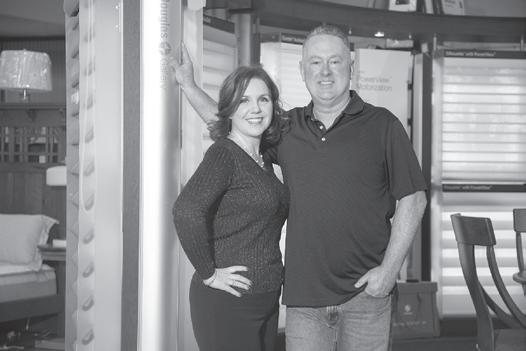























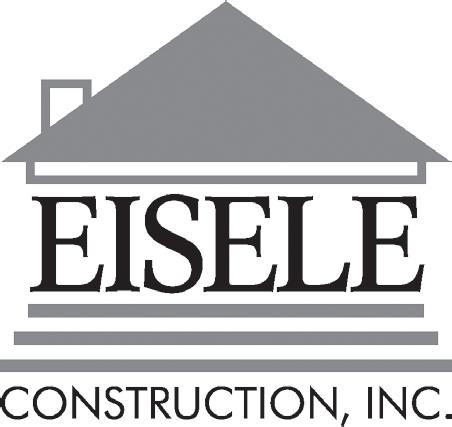











$1,175,000 3337 Spyglass Ct Fairfield 4 2 /1 2,816 0.22
$1,300,000 3114 Lomita Ct Fairfield 4 2 /2 3,200 0.95
$1,477,000 5212 Springridge Way Fairfield 4 3/0 3,400 0.31
$1,695,000 1687 Rockville Rd Fairfield 3 3/0 3,053 0.34
$2,800,000
$539,000 3262
$664,950 4013 The Masters Dr Fairfield 3 2 /0 1,958 0.15 325076535
$779,900 933 Antiquity Dr Fairfield 3 2 /0 1,850 0.16 325000134
$849,000 1946 Leaning Oak Ct Fairfield 5 3/0





